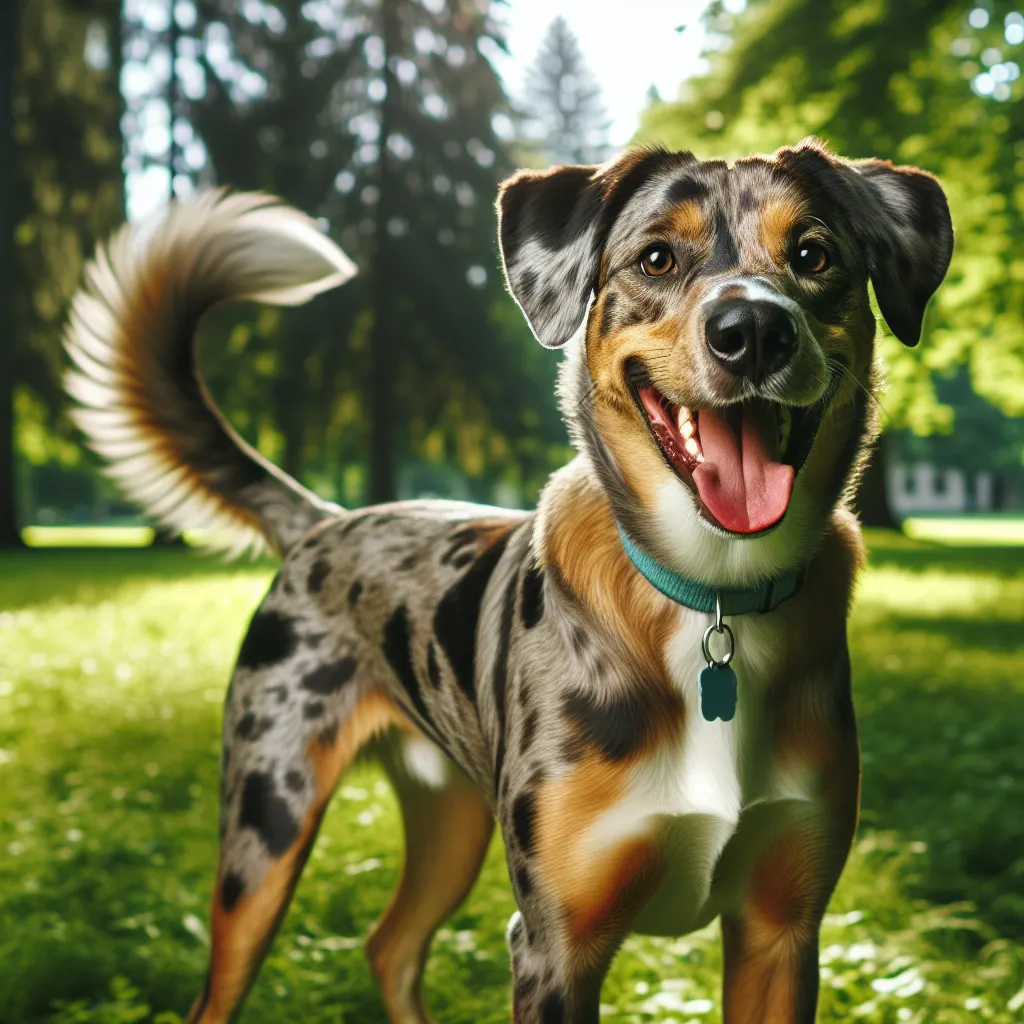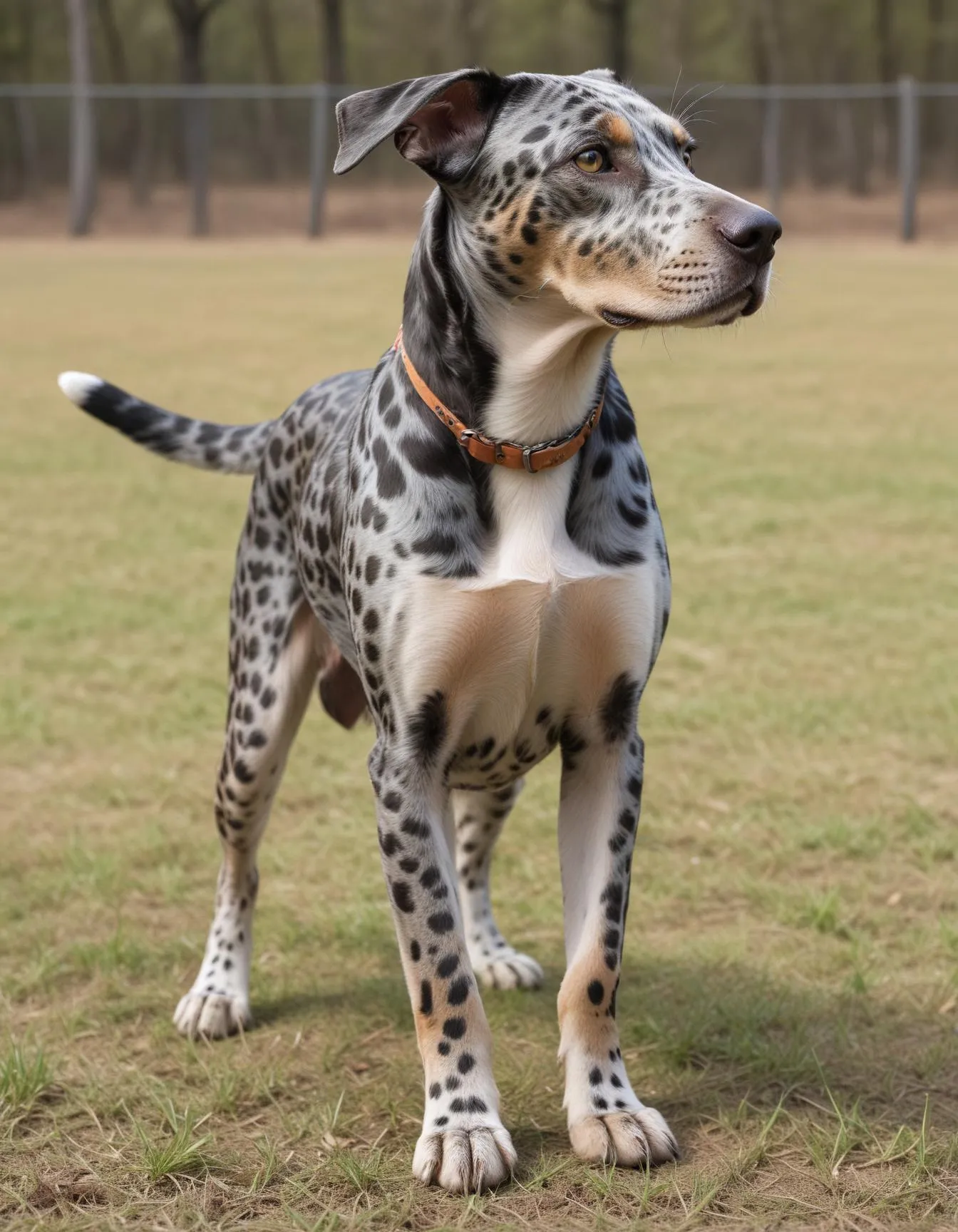Are you considering getting a Catahoula as your new furry companion? Look no further as we present to you ‘The Complete Guide to Catahoula Breed: Everything You Need to Know’. In this comprehensive guide, we will take you on a journey to discover all there is to know about the Catahoula breed.
From its origins in Louisiana to its unique physical features and temperament, we will delve into every aspect of this fascinating breed. Whether you are a first-time dog owner or an experienced handler, this article will provide you with invaluable information to help you understand and appreciate the Catahoula.
Learn about the Catahoula’s distinctive coat patterns and colors, its remarkable hunting and herding abilities, and its intelligence and loyalty. Find out how to properly care for and train your Catahoula, ensuring a happy and well-adjusted pet.
With this guide in hand, you’ll have all the knowledge necessary to make an informed decision before bringing a Catahoula into your home. So, let’s get started on this exciting journey of discovering the wonders of the Catahoula breed!
History and origin of the Catahoula breed
The Catahoula breed has a rich and fascinating history that can be traced back to the early days of Louisiana. The breed’s origins are a subject of much debate and speculation, with various theories proposed by historians and experts. One of the most widely accepted theories suggests that the Catahoula’s ancestors were brought to Louisiana by Spanish explorers and settlers in the 16th and 17th centuries.
These early Catahoulas were believed to be a mix of various breeds, including those brought by the Spanish, as well as local Native American dogs. Over time, the breed evolved and adapted to the unique environment of the Catahoula Swamp region, developing characteristics that made them well-suited for the rugged terrain and diverse wildlife of the area.

The Catahoula’s name is derived from the Catahoula Lake in Louisiana, where the breed was first discovered and recognized. The breed was initially used by local farmers and ranchers for hunting, herding, and guarding livestock. Its versatility and adaptability made it an invaluable asset to the region’s agricultural community, and the Catahoula soon gained a reputation as a hardy and reliable working dog.
Physical appearance and characteristics of Catahoulas
The Catahoula is a striking and unique-looking breed, with a distinctive appearance that sets it apart from many other dog breeds. One of the most notable features of the Catahoula is its coat, which can come in a wide range of colors and patterns, including solid colors, merle, and leopard spots.
The breed’s coat is typically short and smooth, with a medium to coarse texture. Catahoulas can have a wide variety of eye colors, including blue, green, amber, and even heterochromatic eyes, where each eye is a different color. This unique eye coloration is one of the breed’s most distinctive features and is often considered a hallmark of the Catahoula.
In terms of size, Catahoulas are considered a medium to large breed, with males typically standing between 20 and 24 inches tall at the shoulder and weighing between 50 and 95 pounds. Females are generally slightly smaller, with a height range of 18 to 22 inches and a weight range of 40 to 80 pounds. The breed’s muscular build and athletic physique make them well-suited for a wide range of physical activities, from hunting and herding to agility and obedience competitions.
Temperament and personality traits of Catahoulas
The Catahoula breed is known for its unique and multifaceted temperament, which is a blend of intelligence, loyalty, and high energy. These dogs are often described as being highly intelligent and eager to please, making them responsive to training and eager to learn new commands and tricks.
At the same time, Catahoulas can be fiercely independent and strong-willed, which can present challenges for first-time dog owners or those unfamiliar with the breed. They have a strong prey drive and can be territorial, which means they require early and consistent socialization and training to help curb any aggressive or undesirable behaviors.
Despite their sometimes-stubborn nature, Catahoulas are also known for their affectionate and loving personalities. They are deeply loyal to their owners and families, and they thrive on human interaction and companionship. Catahoulas are often described as being “velcro dogs,” as they tend to follow their owners around and seek out constant attention and affection.
Training and socialization for Catahoulas
Proper training and socialization are essential for the Catahoula breed, as their strong-willed nature and high energy levels can make them challenging to manage if not properly addressed. Catahoulas respond best to positive reinforcement training methods, such as clicker training or the use of treats and praise, which help to build a strong bond between the dog and its owner.
It’s important to start training and socialization at a young age, as this helps to instill good behaviors and prevent the development of any problematic tendencies. Puppy training classes and obedience courses can be particularly helpful for Catahoula owners, as they provide a structured environment for the dog to learn and practice new commands and behaviors.

In addition to formal training, it’s also important to provide Catahoulas with plenty of mental and physical stimulation on a daily basis. This can include activities such as puzzle toys, agility training, and interactive play. Keeping a Catahoula mentally and physically engaged can help to prevent boredom and reduce the risk of destructive behaviors, such as chewing or excessive barking.
Health and common medical issues in Catahoulas
While the Catahoula breed is generally considered to be a healthy and hardy breed, there are a few common health issues that owners should be aware of. One of the most significant health concerns for Catahoulas is hip and elbow dysplasia, a genetic condition that can cause joint pain and arthritis.
To help prevent and manage this condition, it’s important for Catahoula owners to work closely with their veterinarians to monitor their dog’s joint health and to follow recommended guidelines for exercise, nutrition, and weight management. Regular veterinary check-ups and x-rays can help to identify any potential issues early on, allowing for prompt treatment and management.
Another common health concern for Catahoulas is deafness, which can be caused by the breed’s distinctive merle coat pattern. Approximately 25-30% of Catahoulas with the merle gene are born deaf, either in one or both ears. Regular hearing tests and careful breeding practices can help to reduce the incidence of deafness in the breed.
Diet and nutrition recommendations for Catahoulas
Catahoulas are active and energetic dogs, which means that they have high nutritional needs to support their physical activity and growth. A high-quality, nutrient-dense dog food that is formulated for medium to large breed dogs is generally recommended for Catahoulas.
When choosing a dog food, it’s important to look for a formula that is rich in protein, healthy fats, and essential vitamins and minerals. Catahoulas have a tendency to be prone to weight gain, so it’s also important to monitor their calorie intake and portion sizes to prevent obesity.

In addition to a balanced diet, Catahoulas also benefit from regular access to clean, fresh water and the occasional treat or supplement, such as omega-3 fatty acids or joint-supporting supplements. It’s important to consult with a veterinarian or a canine nutritionist to determine the best diet and feeding schedule for your Catahoula, as individual needs may vary based on factors such as age, activity level, and overall health.
Exercise and activity requirements for Catahoulas
Catahoulas are highly active and energetic dogs, and they require a significant amount of physical and mental stimulation to keep them happy and healthy. These dogs were originally bred for hunting, herding, and other physically demanding tasks, and they have a natural inclination towards high-intensity activities.
To meet the exercise needs of a Catahoula, owners should plan to provide their dog with at least one to two hours of vigorous exercise per day. This can include activities such as long walks, hikes, swimming, agility training, and playtime in a secure, fenced-in area. Catahoulas also excel at sports like flyball and lure coursing, which can provide them with the physical and mental stimulation they crave.
In addition to physical exercise, Catahoulas also benefit from regular mental stimulation, such as training sessions, puzzle toys, and interactive games. Providing a variety of activities and challenges can help to prevent boredom and reduce the risk of destructive behaviors. It’s important to note that Catahoulas may not be the best fit for owners who are unable to provide the level of exercise and activity they require on a daily basis.
Grooming and care for Catahoulas
Catahoulas have a relatively low-maintenance coat that requires regular grooming to keep it looking its best. Their short, smooth fur is generally easy to maintain, with weekly brushing and occasional bathing as needed. It’s important to note that Catahoulas with the merle coat pattern may require more frequent grooming to keep their coat looking clean and healthy.
In addition to regular brushing, Catahoulas also require regular nail trimming, ear cleaning, and dental care to maintain their overall health and well-being. Owners should establish a routine grooming schedule and work closely with their veterinarian to ensure that their Catahoula’s grooming needs are being met.
Catahoulas are also prone to certain skin and coat-related issues, such as allergies and hot spots. Owners should be vigilant in monitoring their dog’s skin and coat for any signs of irritation or infection, and should work with their veterinarian to address any issues that may arise. With proper grooming and care, Catahoulas can maintain a healthy, beautiful coat and skin throughout their lives.
Finding and adopting a Catahoula: Tips and resources
If you’re interested in bringing a Catahoula into your home, there are a few important things to keep in mind. First and foremost, it’s important to do your research and understand the breed’s unique characteristics and requirements. Catahoulas are not a good fit for every household, and it’s important to ensure that you have the time, resources, and lifestyle to provide for their needs.
One of the best ways to find a Catahoula is to connect with reputable breeders or rescue organizations in your area. Reputable breeders will screen potential owners to ensure that their dogs are going to homes that can provide the level of care and attention they require. Rescue organizations can also be a great resource for finding Catahoulas in need of loving homes.
When adopting a Catahoula, it’s important to be prepared for the breed’s high energy and strong-willed nature. Owners should be ready to commit to extensive training and socialization, as well as providing their Catahoula with plenty of physical and mental stimulation on a daily basis. With the right preparation and commitment, however, Catahoulas can make wonderful, loyal, and loving companions.
There is AI added content / image in this article. Please let us know if you’ve found any incorrect information!

